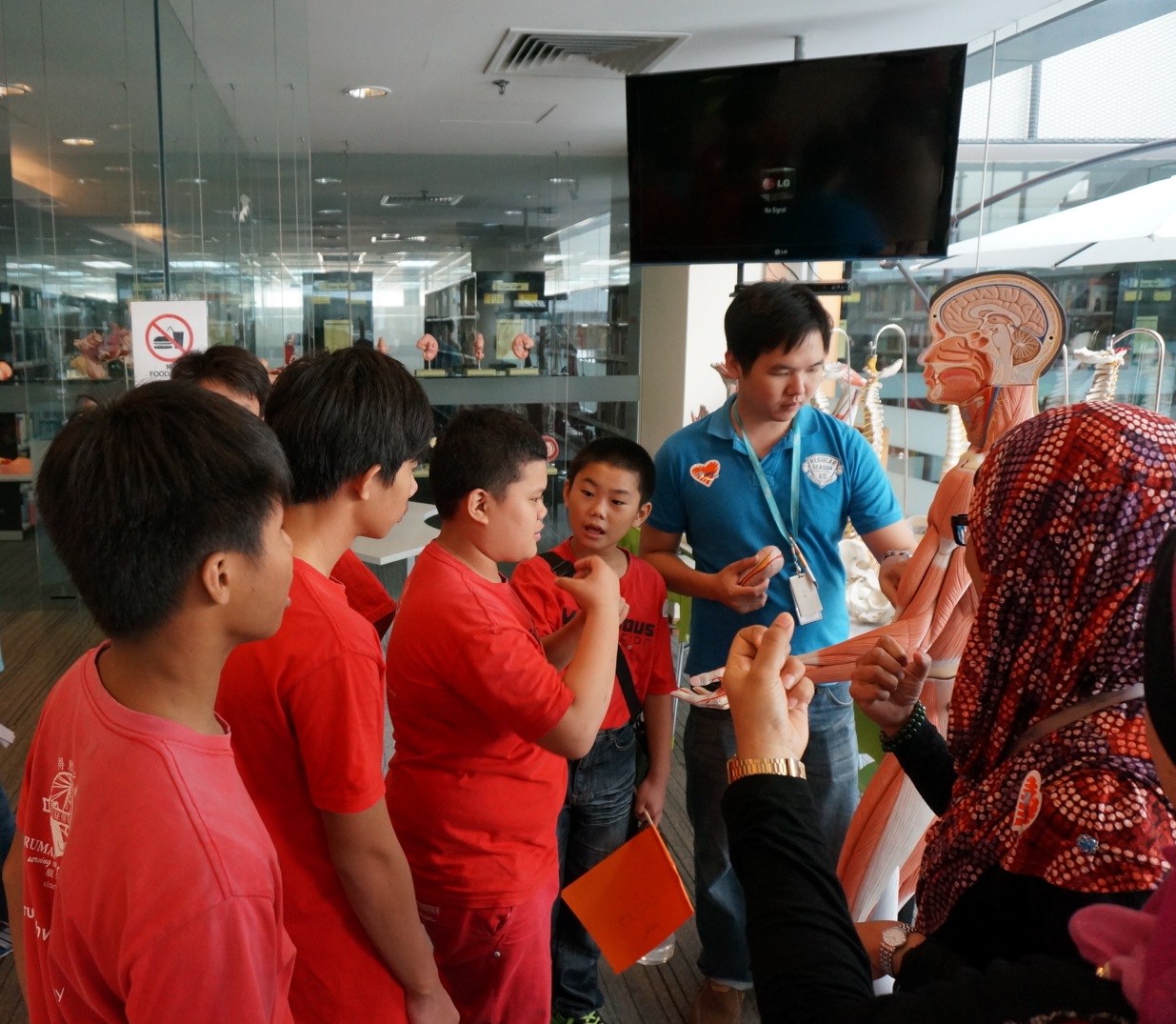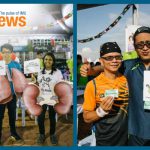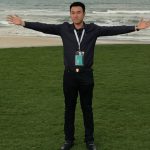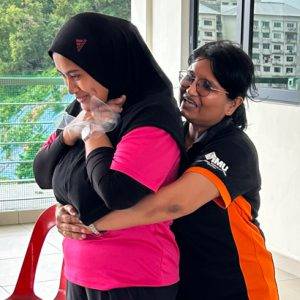To many, the concept of philanthropy is all about money. It is a common belief that since money makes the world go round, money alone would be enough to satisfy the needs of non-profit organisations. Speaking to the caregivers of children homes, however, gives us a very different perspective. With corporate social responsibility becoming an obligation and even a requirement, many children homes receive enough to cover their basic needs. However, caregivers face a huge challenge in helping the children catch up with their schoolwork. To them, what the children need most are good role-models and knowledge. Indeed, in today’s knowledge-based society, knowledge and the ability to network is power. With many organisations choosing to simply write cheques to satisfy their altruistic obligations, scientific knowledge is a very important gift that not many organizations can give. While science is taught in most schools, school children from Malaysian public schools rarely have the chance to have hands-on exposure to instruments in a research lab, and to learn directly from practicing research scientists. 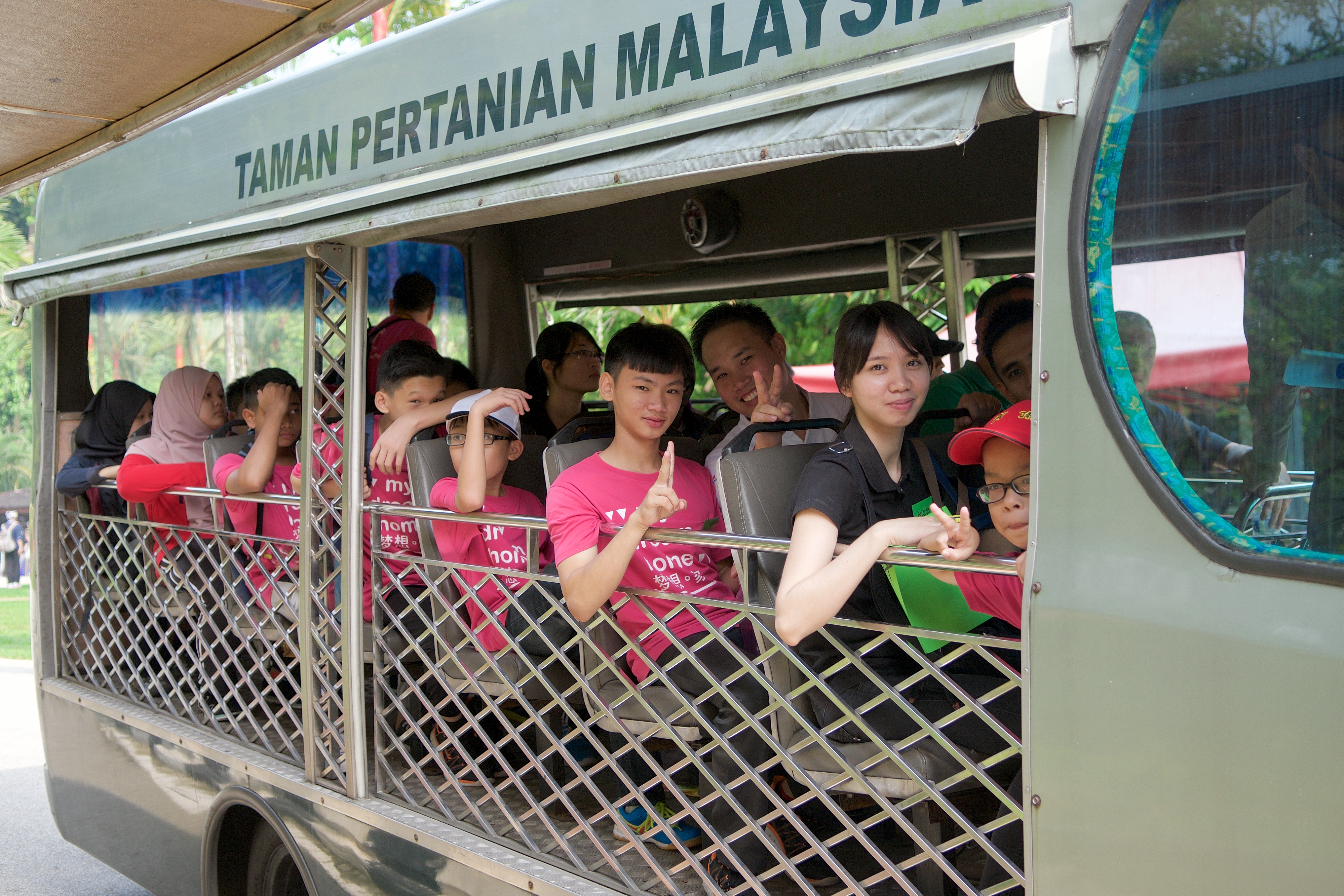 In August 2015, the Institute for Research, Development, and Innovation (IRDI) together with the School of Postgraduate Studies successfully organized two events involving the children and youth from Rumah Victory Children and Youth Centre, Overseas Union Garden (OUG) in a series of activities exposing them to natural field science and basic research knowledge. The events not only involved staff and postgraduate students from IRDI but also members from other schools and departments of IMU. On 1 August 2015 (Saturday), the children and youth were brought to the National Botanical Garden in Bukit Cahaya, Shah Alam, for a day of fun and learning. This activity was conducted with the aim of exposing the children and youth of Rumah Victory to basic field science and to stimulate their interest in science. The children and youth were divided into teams of 5 children each (of mixed ages), which were each led by IMU students or staff members. Designed in an “Amazing Race” format, whereby five stations were set up around the park, this activity provides each team with their own learning themes and tasks.
In August 2015, the Institute for Research, Development, and Innovation (IRDI) together with the School of Postgraduate Studies successfully organized two events involving the children and youth from Rumah Victory Children and Youth Centre, Overseas Union Garden (OUG) in a series of activities exposing them to natural field science and basic research knowledge. The events not only involved staff and postgraduate students from IRDI but also members from other schools and departments of IMU. On 1 August 2015 (Saturday), the children and youth were brought to the National Botanical Garden in Bukit Cahaya, Shah Alam, for a day of fun and learning. This activity was conducted with the aim of exposing the children and youth of Rumah Victory to basic field science and to stimulate their interest in science. The children and youth were divided into teams of 5 children each (of mixed ages), which were each led by IMU students or staff members. Designed in an “Amazing Race” format, whereby five stations were set up around the park, this activity provides each team with their own learning themes and tasks. 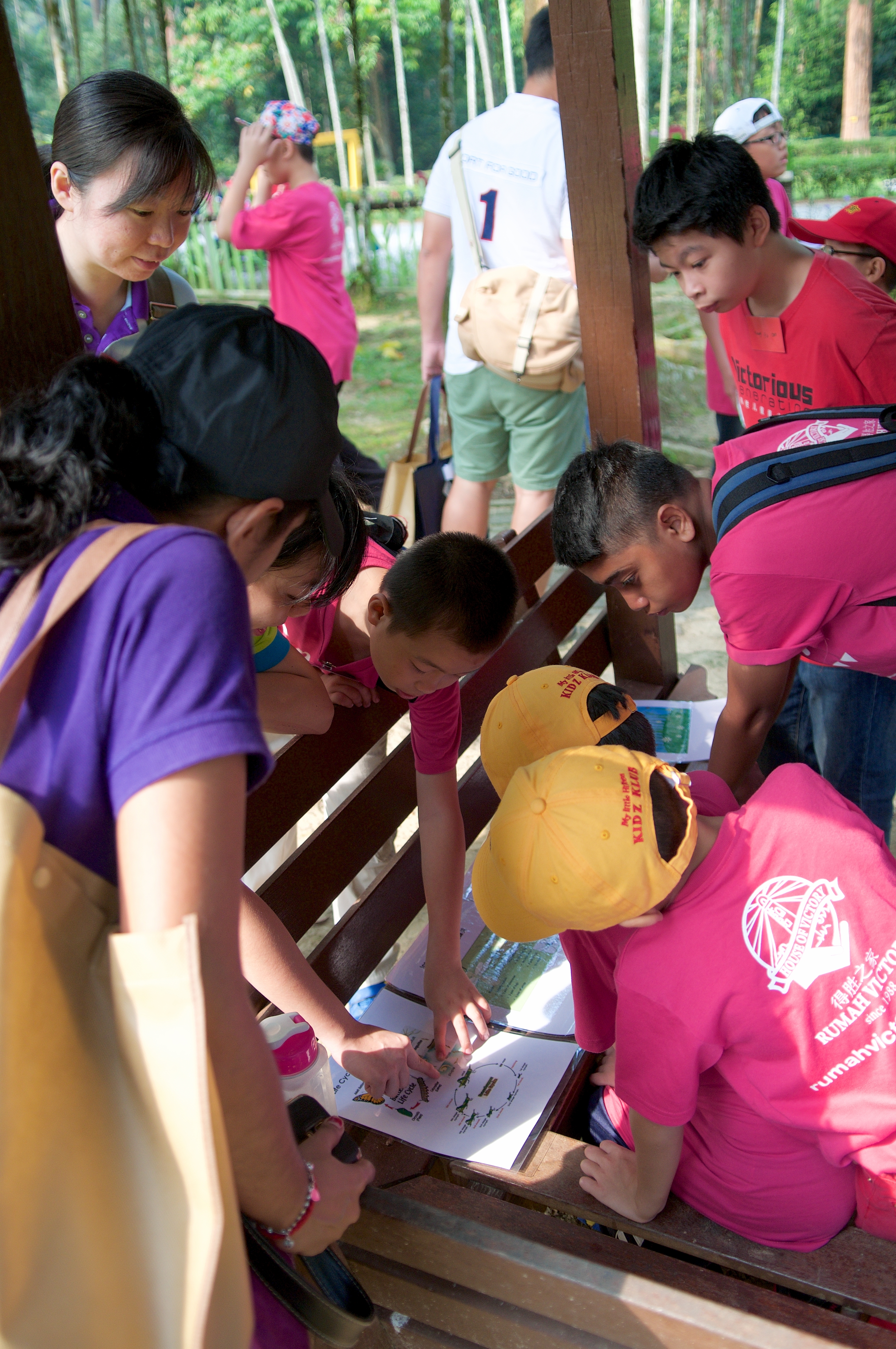 The learning stations covered various themes, including a tour of the mini zoo, the four season house, and mini-lectures on leaves, insects, and soil pH. At the Mini Zoo Station, the children took a tour of the mini zoo and learned about the different types of animals (mammals, birds, amphibians, reptiles, etc.) and their key characteristics. The children also visited the Four Season House where the stationmasters taught them why seasons arise, what the characteristics of each season are, and why the southern and northern hemispheres have opposite seasons. Moving on to the Ornamental Garden, the children were given a brief lecture on insects and leaves. Subsequently, the children were asked to collect dead insect and leaf samples. These samples were kept for the second event which was the Indoor Science Camp held on 29 August 2015. Lastly at the Soil and pH Station, the children learned about pH and the function of litmus paper by having the stationmaster demonstrate how it changes colors in acidic or alkaline solutions.
The learning stations covered various themes, including a tour of the mini zoo, the four season house, and mini-lectures on leaves, insects, and soil pH. At the Mini Zoo Station, the children took a tour of the mini zoo and learned about the different types of animals (mammals, birds, amphibians, reptiles, etc.) and their key characteristics. The children also visited the Four Season House where the stationmasters taught them why seasons arise, what the characteristics of each season are, and why the southern and northern hemispheres have opposite seasons. Moving on to the Ornamental Garden, the children were given a brief lecture on insects and leaves. Subsequently, the children were asked to collect dead insect and leaf samples. These samples were kept for the second event which was the Indoor Science Camp held on 29 August 2015. Lastly at the Soil and pH Station, the children learned about pH and the function of litmus paper by having the stationmaster demonstrate how it changes colors in acidic or alkaline solutions. 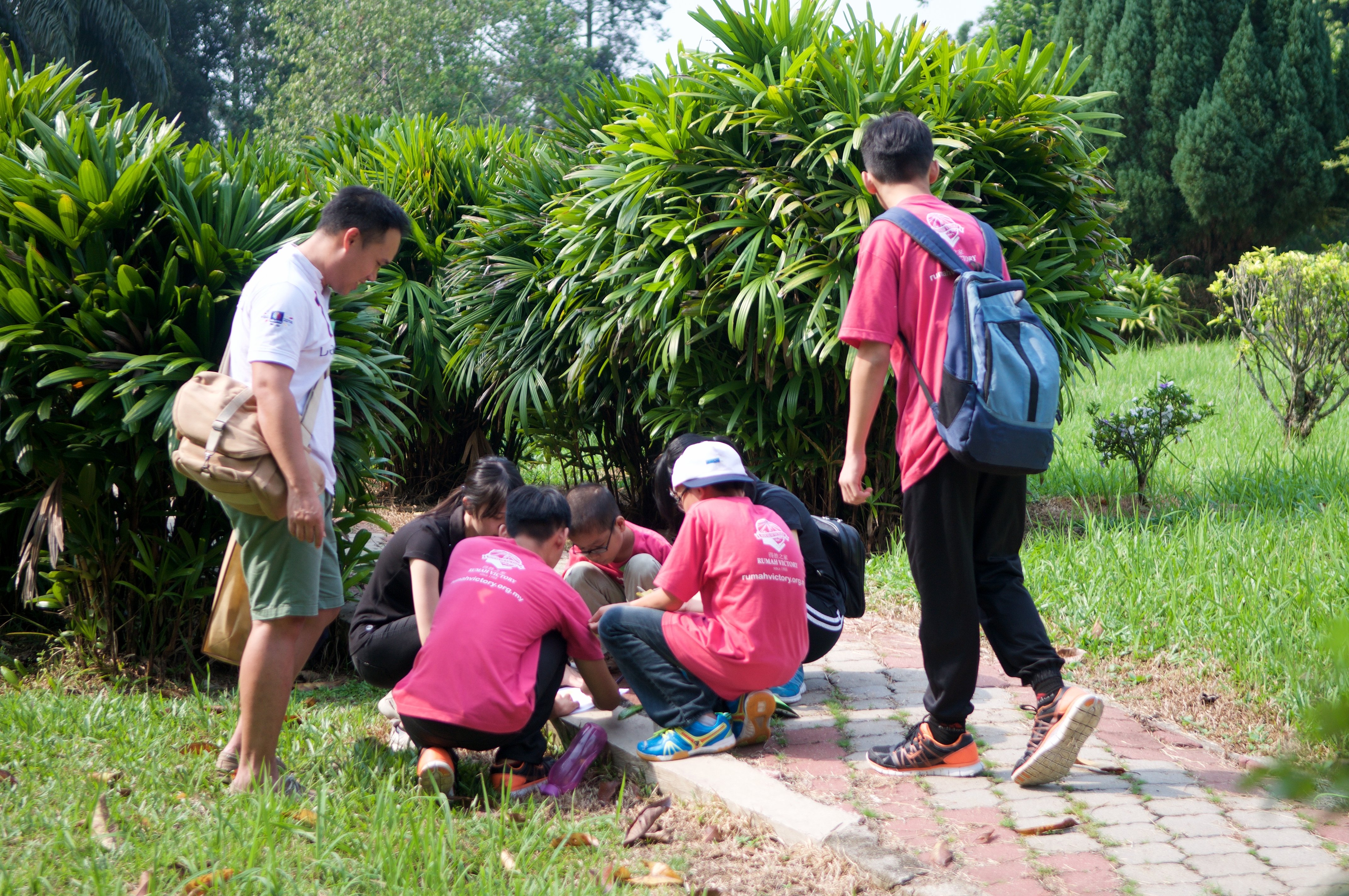
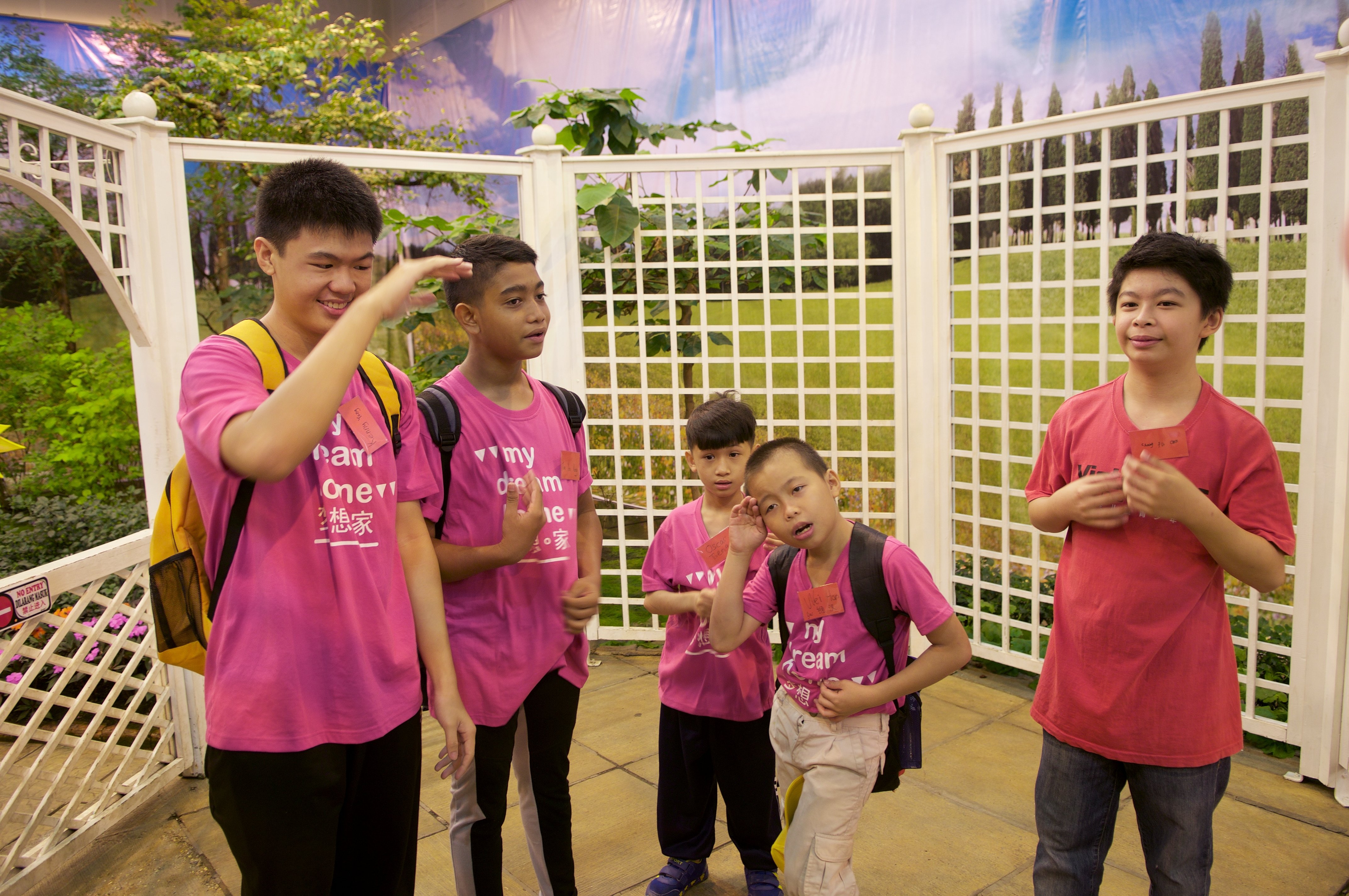 As a follow up to the visit to the National Botanical Garden, the children visited IMU on 29 August 2015 (Saturday) for the second instalment of the IMU Science Camp. The aim of this event was to expose the children and youth to the research laboratory and medical museum and ultimately stimulate their interest in science. In the Research Laboratory, four learning stations were designed and set up, covering the themes of insects, leaves, microbiology and electrochemistry. Two additional stations were set up, one at the medical museum, and another a quiz and game station.
As a follow up to the visit to the National Botanical Garden, the children visited IMU on 29 August 2015 (Saturday) for the second instalment of the IMU Science Camp. The aim of this event was to expose the children and youth to the research laboratory and medical museum and ultimately stimulate their interest in science. In the Research Laboratory, four learning stations were designed and set up, covering the themes of insects, leaves, microbiology and electrochemistry. Two additional stations were set up, one at the medical museum, and another a quiz and game station. 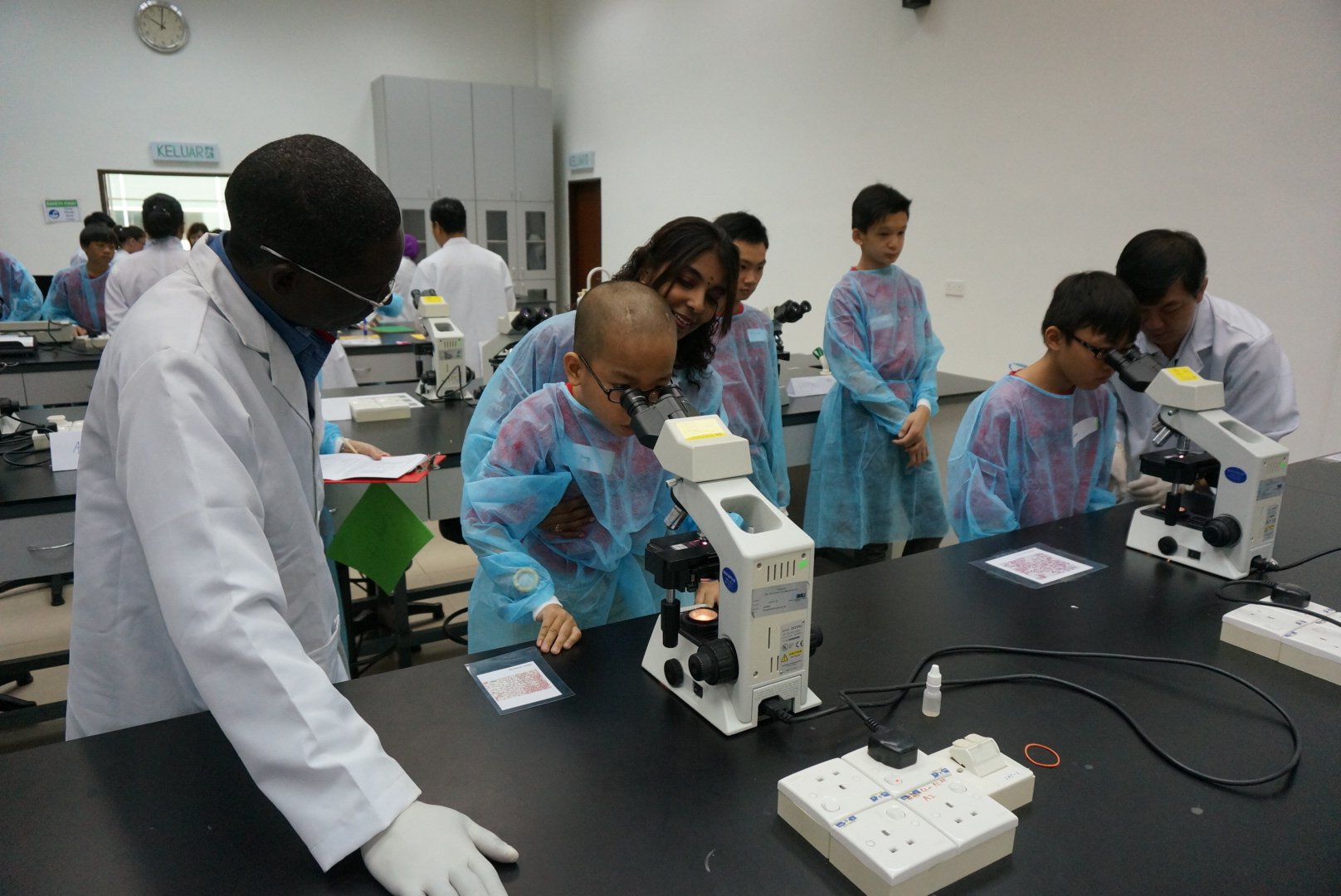
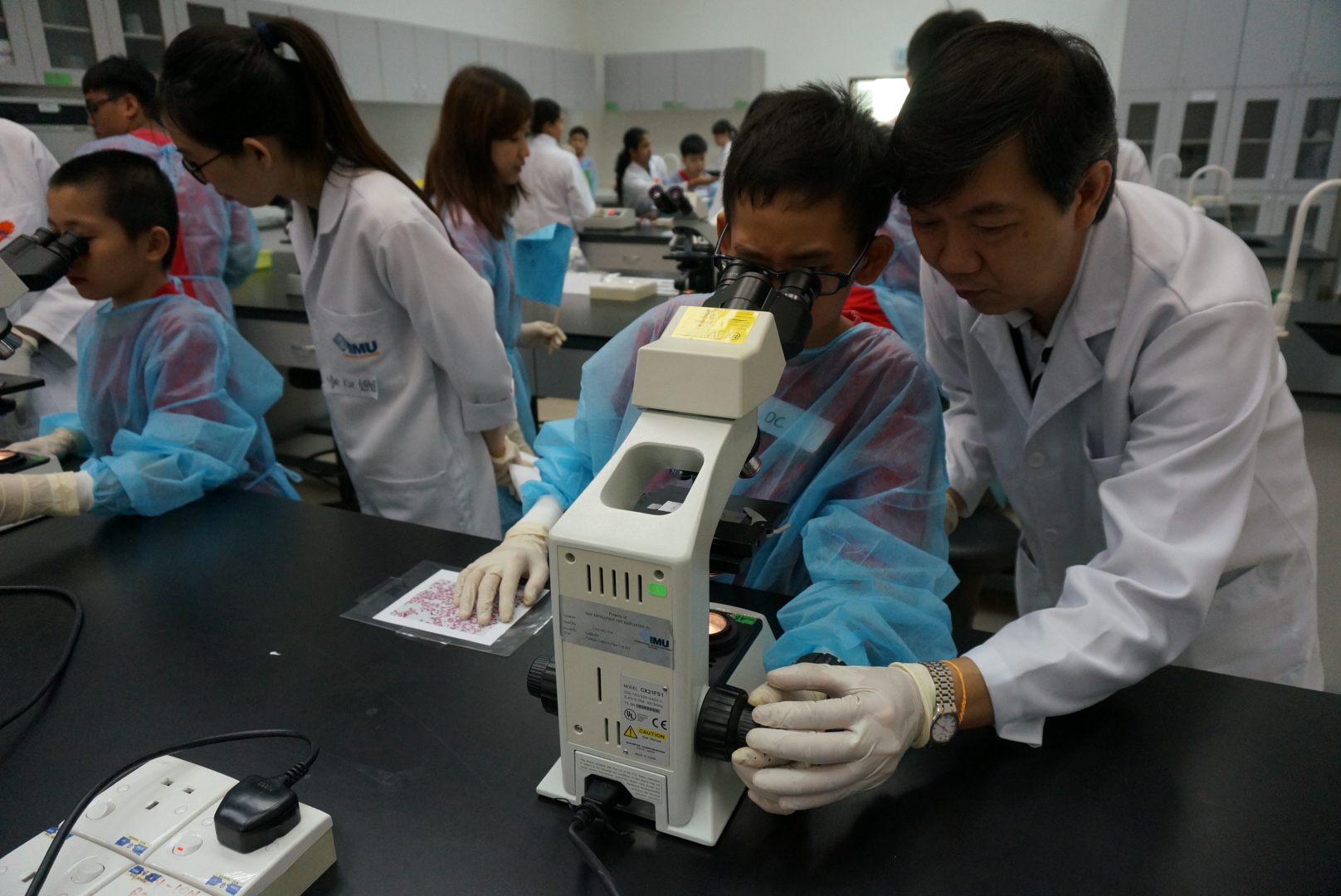 At the Insect Station, stereo microscopes were set up to view some of the preserved insect samples collected from National Botanical Garden. The insects available for viewing included beetles, a cockroach, an antlion, carpenter ants, flies, mosquitoes, and mosquito larvae. At the Leaf Station, the children had fun designing and decorating their own bookmarks using the preserved leaves collected from the previous trip to the National Botanical Garden. The children were provided with a variety of color papers and art materials. The bookmarks were laminated, and the children could keep the bookmarks as a souvenir. At the microbiology station, compound microscopes were set up with various samples of microorganisms, allowing the children to learn about and observe the structural features of the microorganisms and how they affect their daily lives (e.g. the types of mold which grow on bread, microorganisms which cause diarrhea and wound infections, and algae of different shapes, sizes and colors, microalgae which grow in the environment, etc.).
At the Insect Station, stereo microscopes were set up to view some of the preserved insect samples collected from National Botanical Garden. The insects available for viewing included beetles, a cockroach, an antlion, carpenter ants, flies, mosquitoes, and mosquito larvae. At the Leaf Station, the children had fun designing and decorating their own bookmarks using the preserved leaves collected from the previous trip to the National Botanical Garden. The children were provided with a variety of color papers and art materials. The bookmarks were laminated, and the children could keep the bookmarks as a souvenir. At the microbiology station, compound microscopes were set up with various samples of microorganisms, allowing the children to learn about and observe the structural features of the microorganisms and how they affect their daily lives (e.g. the types of mold which grow on bread, microorganisms which cause diarrhea and wound infections, and algae of different shapes, sizes and colors, microalgae which grow in the environment, etc.). 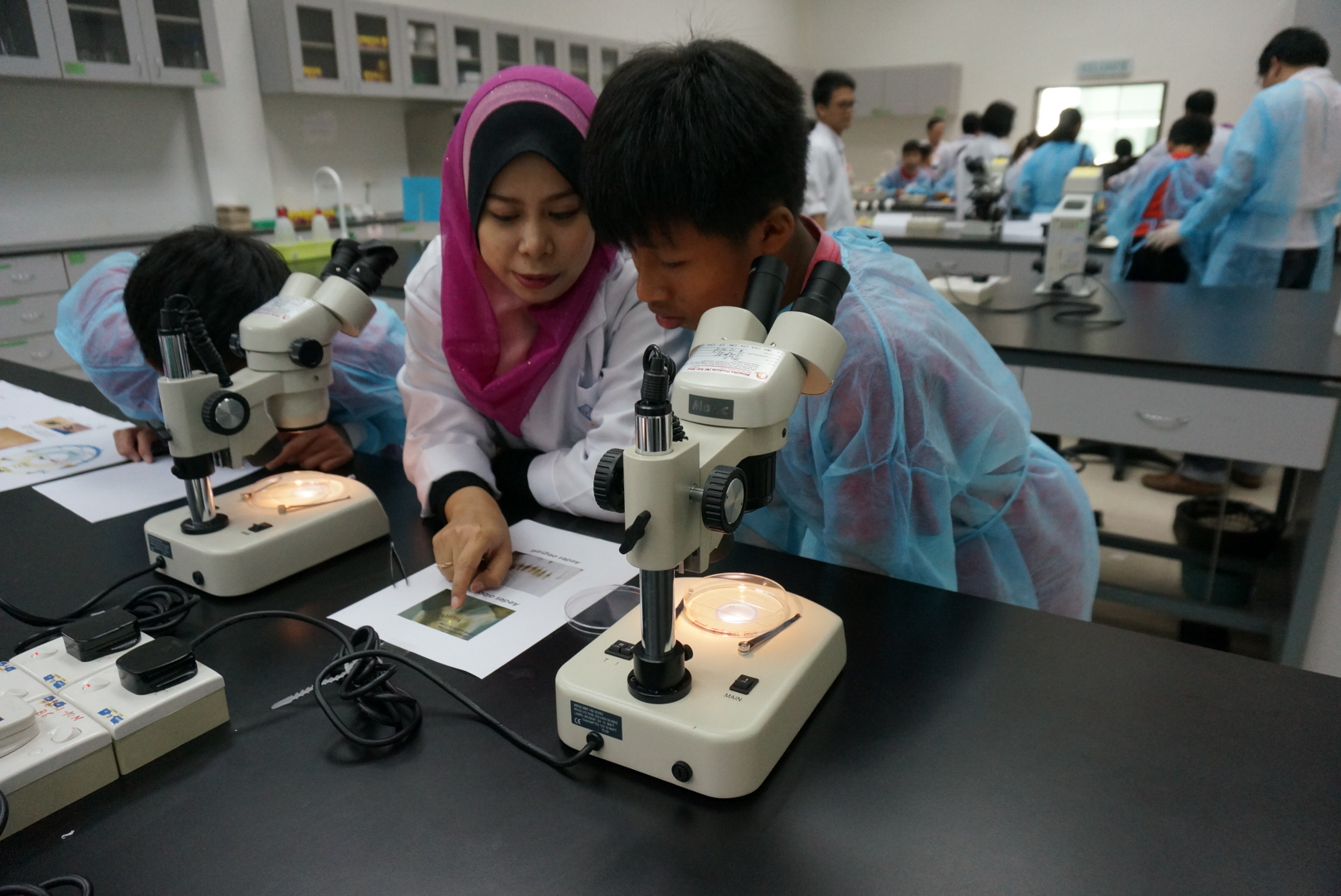
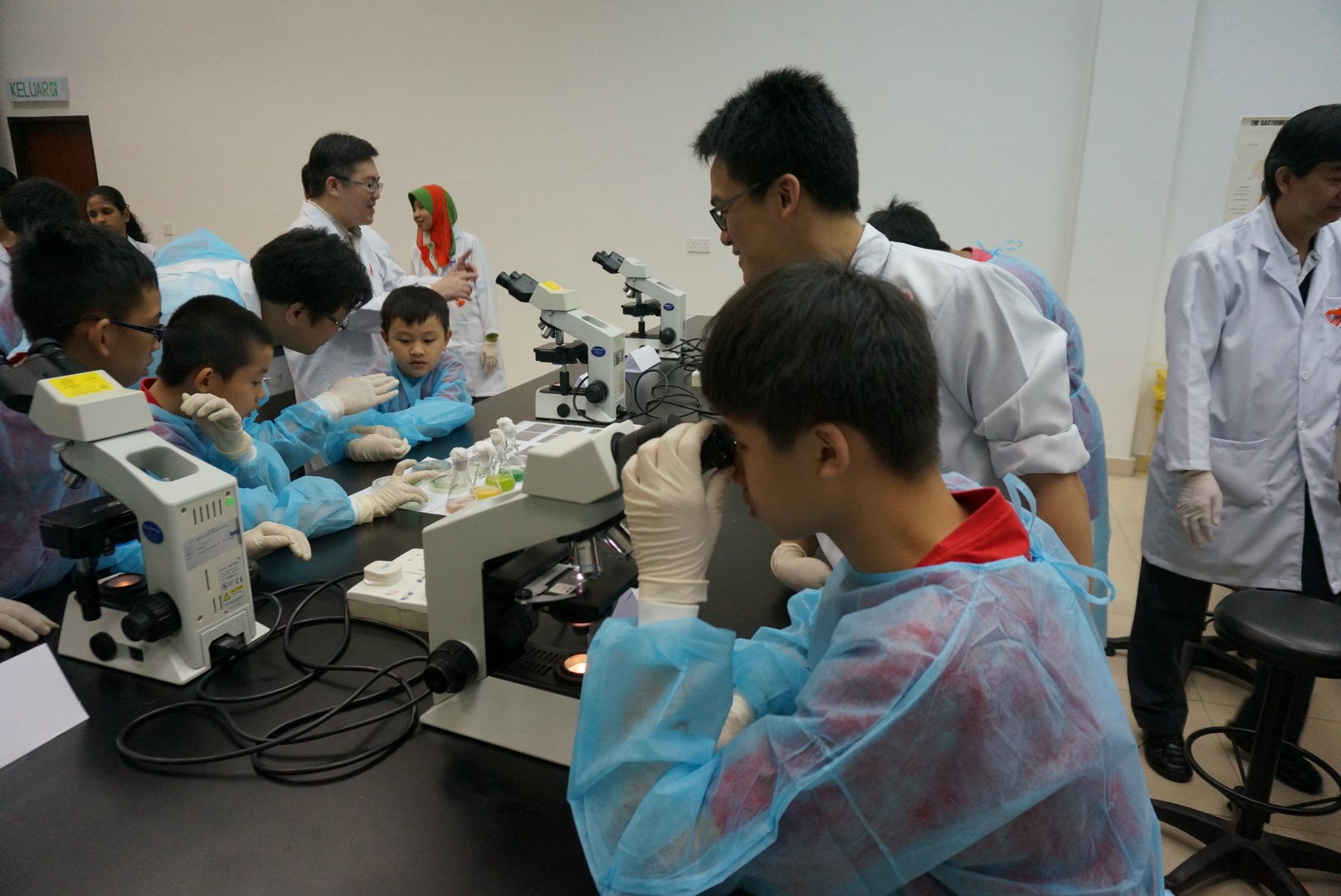 The children were also taught about electroplating at the Electrochemistry Station. The children were each given a copper plate and were asked to draw or write anything they liked on the copper plate with a permanent marker. They could then watch the electroplating process where a silver-colored nickel surface was plated on top of the copper plate. They observed that the ink of the marker pen served as an insulator against the electroplating. The children were allowed to keep their own electroplated copper plates as a souvenir as well.
The children were also taught about electroplating at the Electrochemistry Station. The children were each given a copper plate and were asked to draw or write anything they liked on the copper plate with a permanent marker. They could then watch the electroplating process where a silver-colored nickel surface was plated on top of the copper plate. They observed that the ink of the marker pen served as an insulator against the electroplating. The children were allowed to keep their own electroplated copper plates as a souvenir as well. 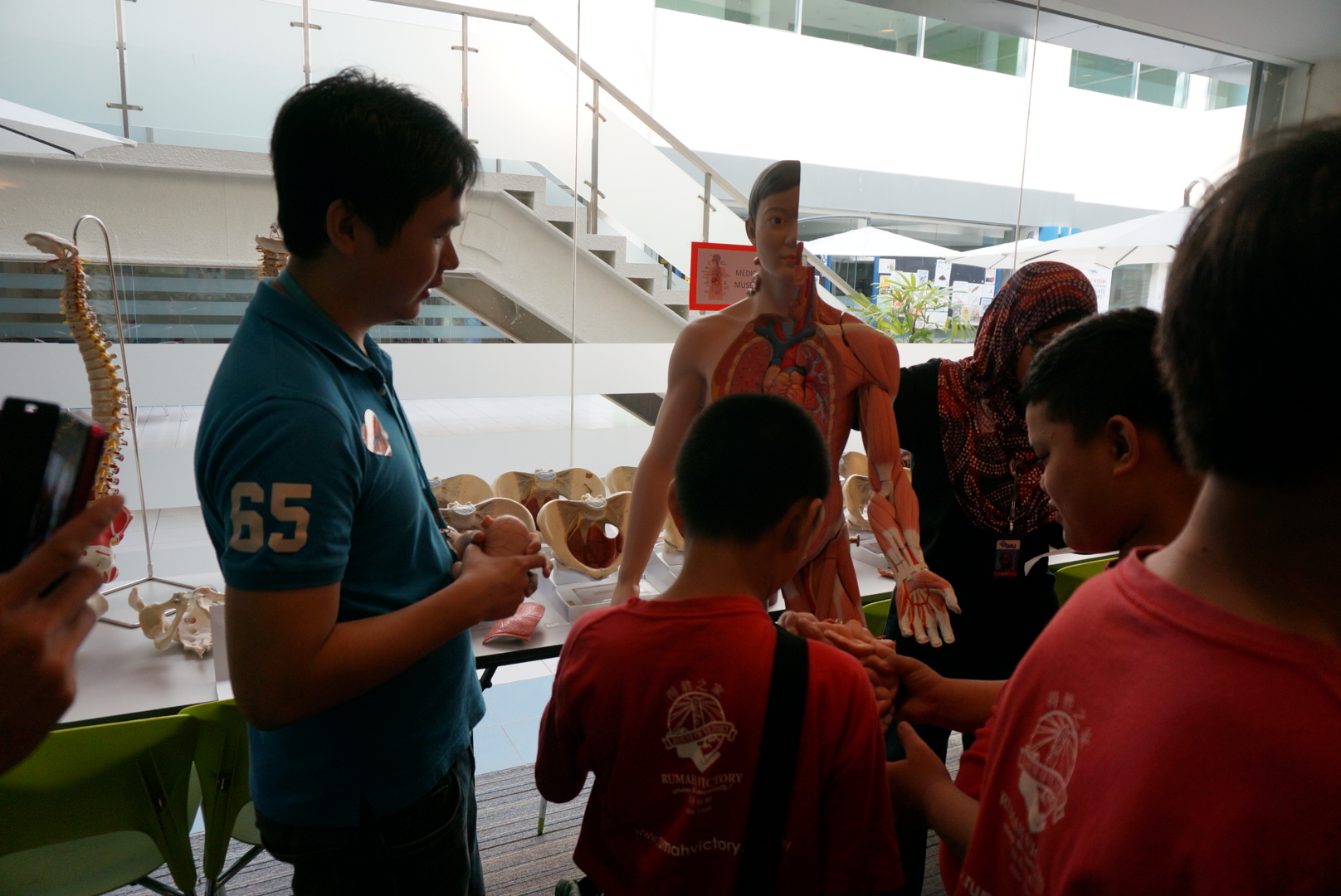 Besides that, the children were also brought on a tour to the Medical Museum where they were taught about the parts of the body and the names of internal organs using the mannequin. In the process, they were allowed to have hands-on interaction with the mannequin. Aside from learning where each internal organ is located within the body, they were also taught and quizzed on the functions and characteristics of different organs. Last but not least, the children were brought to the Cup Stacking Game and Quiz Station. The stationmaster asked questions to help the children to recapitulate what they had learned. They were then taught how to play with one of the educational games (speed cup stacking) that was purchased for them under the IMU Cares educational toys programme.
Besides that, the children were also brought on a tour to the Medical Museum where they were taught about the parts of the body and the names of internal organs using the mannequin. In the process, they were allowed to have hands-on interaction with the mannequin. Aside from learning where each internal organ is located within the body, they were also taught and quizzed on the functions and characteristics of different organs. Last but not least, the children were brought to the Cup Stacking Game and Quiz Station. The stationmaster asked questions to help the children to recapitulate what they had learned. They were then taught how to play with one of the educational games (speed cup stacking) that was purchased for them under the IMU Cares educational toys programme. 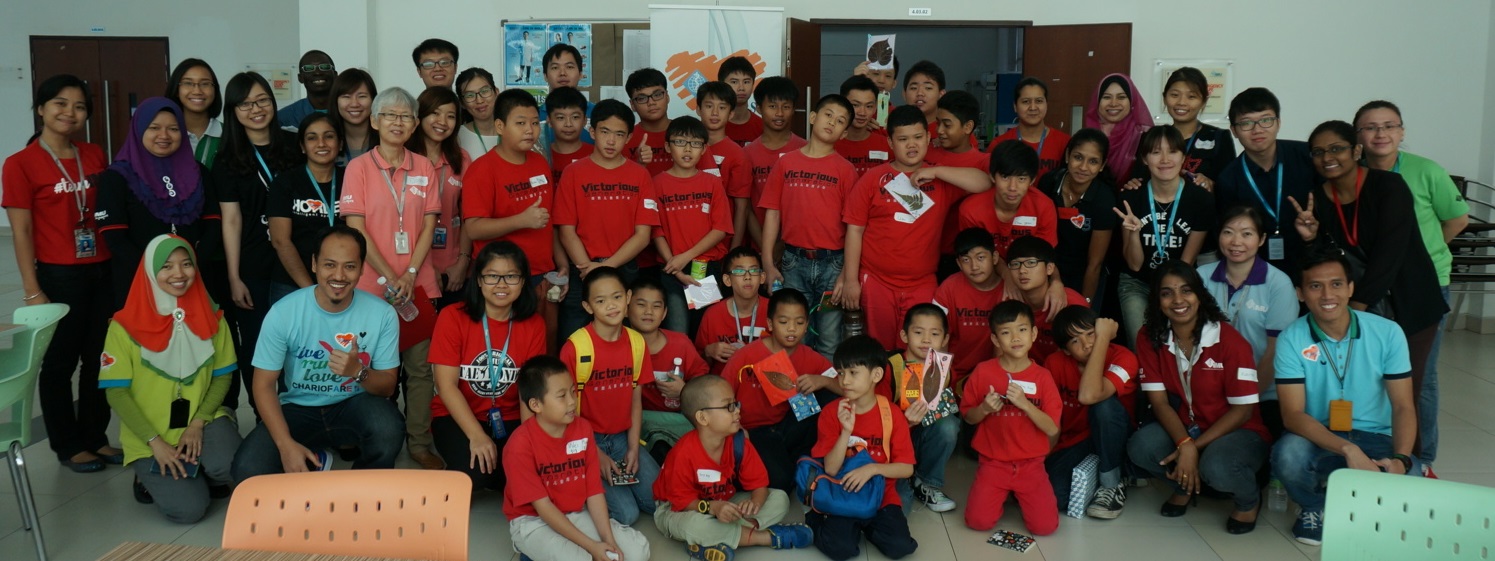 Both events ended with a hearty lunch, after which the children were invited to share what they had learned, and what they felt about the day’s activities. Although a lot of time and energy went into planning and executing these events, it was all worth it when we learned that the children could still remember what they had learned from us a month ago, or when a 10 year old child could describe what happens during electroplating. As the children were leaving, several of them were asking their caregivers – “When are we coming back again?” and “I would like to visit the medical museum again”. To us, these words speak louder than anything that we had done our job in stimulating their interest in science.
Both events ended with a hearty lunch, after which the children were invited to share what they had learned, and what they felt about the day’s activities. Although a lot of time and energy went into planning and executing these events, it was all worth it when we learned that the children could still remember what they had learned from us a month ago, or when a 10 year old child could describe what happens during electroplating. As the children were leaving, several of them were asking their caregivers – “When are we coming back again?” and “I would like to visit the medical museum again”. To us, these words speak louder than anything that we had done our job in stimulating their interest in science. 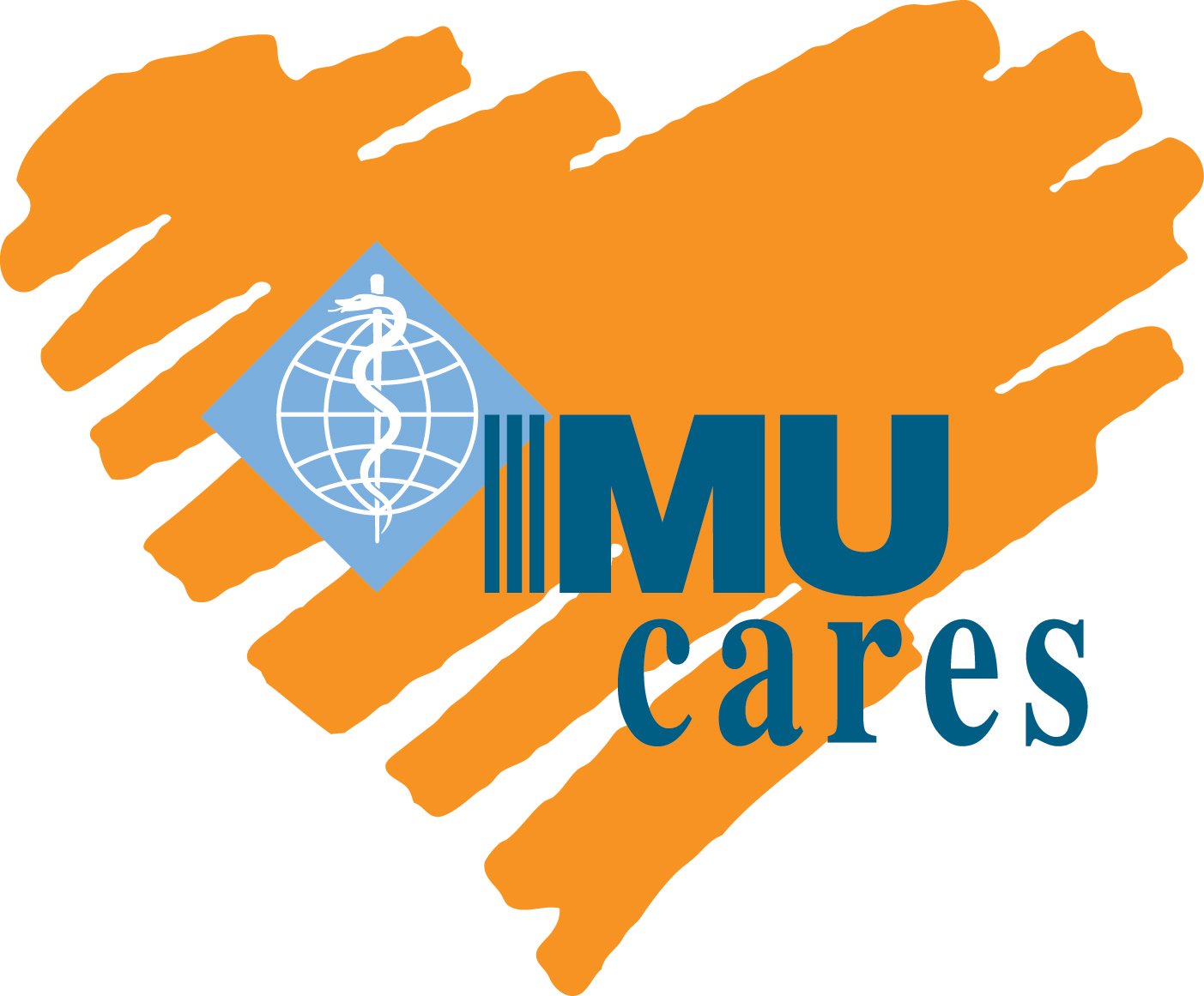 These events marked the first science camp organized by IRDI and the School of Postgraduate Studies for Rumah Victory under the IMU Cares programme. It was indeed a great feeling seeing the children demonstrating so much interest in the natural and health sciences. The children expressed that they had a lot of fun during the activity and had learned a lot. We hope to bring more of such events to the children of Rumah Victory. Who knows, some of them may grow up to become great scientists.
These events marked the first science camp organized by IRDI and the School of Postgraduate Studies for Rumah Victory under the IMU Cares programme. It was indeed a great feeling seeing the children demonstrating so much interest in the natural and health sciences. The children expressed that they had a lot of fun during the activity and had learned a lot. We hope to bring more of such events to the children of Rumah Victory. Who knows, some of them may grow up to become great scientists.




